Which of the four arrangements in the figure correctly shows the vector addition of two forces →F1 and →F2 to yield the third force →F3
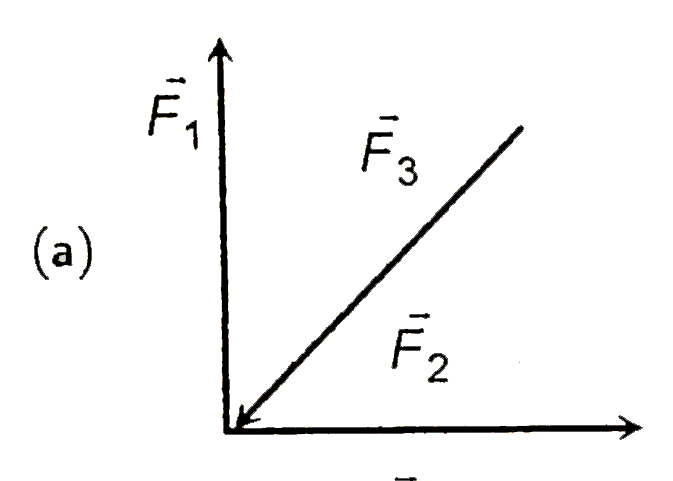



The correct Answer is:C
To determine which of the four arrangements correctly shows the vector addition of two forces →F1 and →F2 to yield the third force →F3, we can follow these steps:
Step 1: Understand Vector Addition
Vector addition involves placing the tail of one vector at the head of another vector. The resultant vector is drawn from the tail of the first vector to the head of the second vector.
Step 2: Analyze Each Arrangement
We need to analyze each of the four arrangements provided in the figure to see which one follows the rules of vector addition.
1. Arrangement A: Check if →F1 is placed at the tail of →F2 and the resultant →F3 is drawn from the tail of →F1 to the head of →F2.
2. Arrangement B: Check if →F2 is placed at the tail of →F1 and the resultant →F3 is drawn from the tail of →F2 to the head of →F1.
3. Arrangement C: Check if →F1 and →F2 are drawn in such a way that →F3 does not represent the resultant.
4. Arrangement D: Check if →F3 is drawn incorrectly or does not follow the vector addition rule.
Step 3: Identify the Correct Arrangement
After analyzing each arrangement, identify which one correctly represents the vector addition of →F1 and →F2 to yield →F3.
Conclusion
The correct arrangement will show that →F1+→F2=→F3, meaning the head of →F1 or →F2 should meet the tail of →F3.
Vector addition involves placing the tail of one vector at the head of another vector. The resultant vector is drawn from the tail of the first vector to the head of the second vector.
We need to analyze each of the four arrangements provided in the figure to see which one follows the rules of vector addition.
2. Arrangement B: Check if →F2 is placed at the tail of →F1 and the resultant →F3 is drawn from the tail of →F2 to the head of →F1.
3. Arrangement C: Check if →F1 and →F2 are drawn in such a way that →F3 does not represent the resultant.
4. Arrangement D: Check if →F3 is drawn incorrectly or does not follow the vector addition rule.
After analyzing each arrangement, identify which one correctly represents the vector addition of →F1 and →F2 to yield →F3.
The correct arrangement will show that →F1+→F2=→F3, meaning the head of →F1 or →F2 should meet the tail of →F3.
Topper's Solved these Questions
- BOOK - ERRORLESS CHAPTER - NEWTONS LAWS OF MOTIONEXERCISE - Motion of Connected Bodies23videos
NEWTONS LAWS OF MOTION
- BOOK - ERRORLESS CHAPTER - NEWTONS LAWS OF MOTIONEXERCISE - Critical Thinking19videos
NEWTONS LAWS OF MOTION
- BOOK - ERRORLESS CHAPTER - NEWTONS LAWS OF MOTIONEXERCISE - Conservation of Linear Momentum and Impulse27videos
NEWTONS LAWS OF MOTION
- BOOK - ERRORLESS CHAPTER - MOTION IN TWO DIMENSIONEXERCISE - Exercise319videos
MOTION IN TWO DIMENSION
- BOOK - ERRORLESS CHAPTER - ROTATIONAL MOTIONEXERCISE - Practice Problems (Problems based on motion of connected mass)10videos
ROTATIONAL MOTION
Similar Questions
Which of the figure's six arrangements correctly show the vector addition of forces →F1 and →F2 to yield the third vector, which is meant to represent their net force →Fnet ?
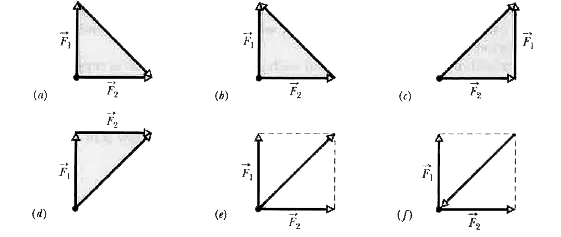 View Solution
View SolutionThe figure shows an overhead view of a meter stick that can pivot about the point indicated, which is to the left of the stick's midpoint. Two horizontal forces, →F1and→F2, are applied to the stick. Only →F1 is shown. Force →F2 is perpendicular to the stick and is applied at the right end. If the stick is not to turn, (a) what should be the direction of →F2, and (b) should F2 be greater than, less than, or equal to F1?
 View Solution
View Solution
Knowledge Check
- Question 1 - Select One
Which of the four arrangements in the figure correctly shows the vector addition of two forces F1 & F2 to yield the third force F3?
A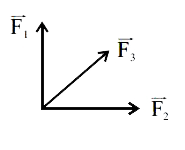 B
B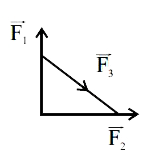 C
C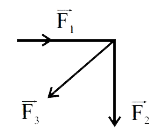 D
D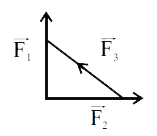
- Question 2 - Select One
The resultant of the forces →F1=4ˆi−3ˆj and →F2=6ˆi+8ˆj is
A5√5B10ˆi−5ˆjC125D−2ˆi−3ˆj - Question 3 - Select One
A body is at rest under the action of three forces, two of which are →F1=4ˆi,→F2=6ˆj, the third force is
A4ˆi+6ˆjB4ˆi−6ˆjC−4ˆi+6ˆjD−4ˆi−6ˆj
If the four forces as shown are in equilibrium Express →F1&→F2 in unit vector form.
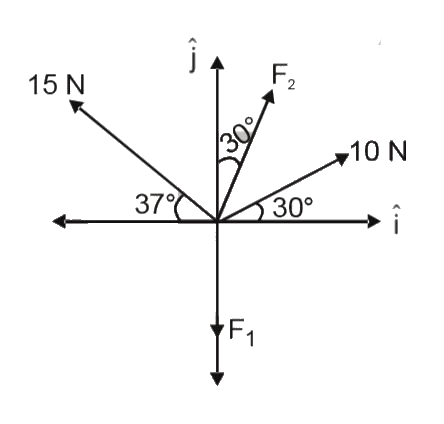 View Solution
View SolutionIf the four forces as shown are in equilibrium Express →F1&→F2 in unit vector form.
 View Solution
View Solution_E01_076_Q01.png)
In the given figure L=1 metre if total gravitational force on 4 kg mass is verF1 and on 2 kg mass is →F2 then find out the ratio of ∣∣∣→F2→F2∣∣∣View SolutionTwo forces →F1=(3N)ˆi−(4N)ˆj and →F2=−(1N)ˆi−(2N)ˆj act on a point object. In the given figure which of the six vectors represents →F(1) and →F2 and what is the magnitude of the net forces
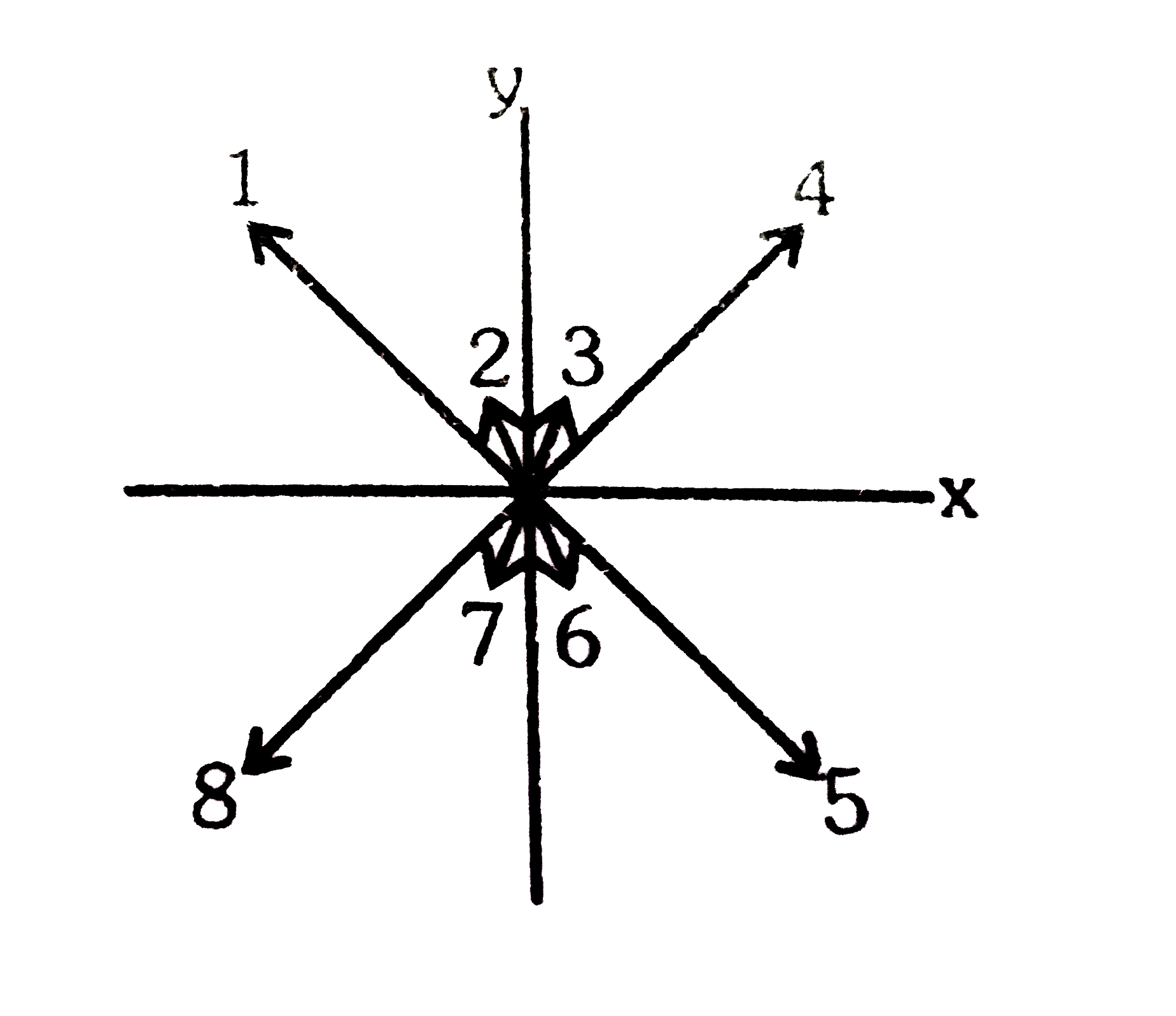 View Solution
View SolutionTwo forces →F1and→F2 are acting at right angles to each other, find their resultant ?
View Solution

